...
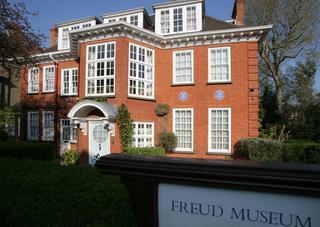
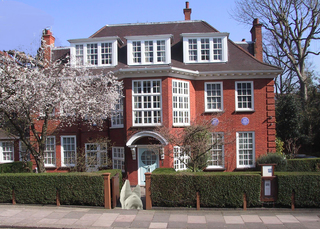
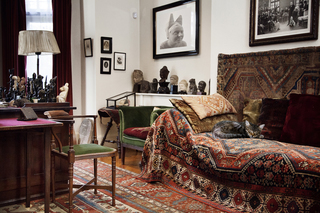
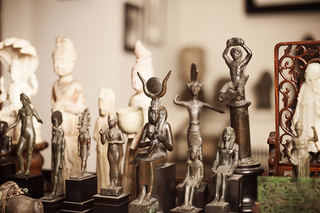
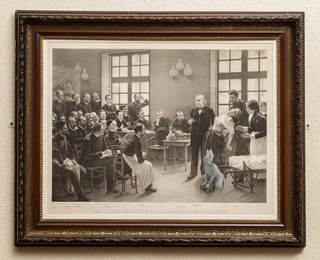
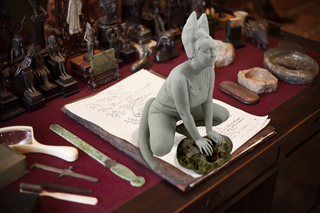
a-visit-through-the-window
In March of 2020 the Freud Museum had to temporarily close its doors to visitors due to Covid-19. Our connection with the museum is now liminal. Our visits will be across multiple spaces at once.
The floorboards having been left in silence now tell of a disturbance.
0
A cat climbs through the window of Berggasse 19, Vienna. Freud, being no fan of cats, has a slight change of heart:
‘The cat would inspect in passing the antique objects […]. But when the cat proceeded to make known its archaeological satisfaction by purring and with this lithe grace did not cause the slightest damage, Freud's heart melted and he ordered milk for it. From then on the cat claimed its rights to daily take a place on the sofa, inspect the antiques, and get its bowl of milk.’
1
Metamorphosis is both rich and muted. It is fragmented; if not actually disintegrating. Environments crumble like poor containers.
Our nostalgic material, as with the hidden core, is already cast – already thrown. But the code is outside of all relation to the dominant paradigm – like a blueprint of ancient hieroglyphs.
The mind's construction can exist on the half landing. We cross from one side to the other, in an ebb and flow of latent detritus and loosely cobbled arrangements.
2
We are our own tidal governing.
3
Over the couch hangs a reproduction of Jean-Auguste Dominique Ingres’ neo-classical painting ‘Oedipus and the Sphinx’.
4
A large etching of the ‘Sphinx at Giza’ [is] displayed amongst his bookshelves and a terracotta [Sphinx] figurine [is] amongst his prized objects.
5
The cat, failing to reciprocate Freud’s attention, is dubbed ‘the narcissistic cat’.
It seems there is a lack of enthusiasm in Freud for cats, whereas his love for dogs is apparent.
The Sphinx is undeniably present, and yet left free to drift and wander; independent of the language of his books.
6
Our relationship with the Sphinx began in early childhood. Our parents bought an electric can opener so that our small hands could independently provide two meals a day for our feline friends. A token of independence that allowed us to create our own little world. We believed an understanding was shared with the cats. Not a communication, or a language, but a connection of understanding. Our shelf in the girl’s bedroom became a shrine of totemic cat ornaments. In our teens we would place the Sphinx somewhere on the pages of our drawings. She was always present.
7
A state of evenly hovering attention.
Bent consciousness. Listening.
Opposed to the master’s god of logos – the language/rational god – so that he strains to reach it.
8
On the desk sits a Bastet deity. Originally a lion goddess, a role shared by other deities such as Sekhmet. Eventually Bastet and Sekhmet are characterised as two aspects of the same Goddess. A paradoxical unifying and splitting. Bastet becomes domesticated. However, she is still a fierce predator, and blood-thirsty Sekhmet reminds us of our capacity for malevolence.
‘There are two sisters. One gives birth to the other, and she in turn gives birth to the first. Who are the two sisters?’
9
We are our own tidal governing.
10
We are neither the dawn nor the dusk, but midday – midnight and all that spreads itself between.
11
The gods and goddesses that will make it into the pantheon of the Greeks and the Romans are archetypal, they are human templates for a form of being – they are one dimensional and easy to slot into an envelope of understanding. Hecate, however, is strange; she is potent, she is omnipresent and yet she is liminal - she is not one easy archetype; but stands at the crossroads, aflame with many traits and characteristics as well as powers.
12
OOO continues, still, the divide of self/object.
We are a self-portrait of Sphinx as object.
Bent consciousness.
A state of evenly hovering attention.
13
We guarded the gate of 20 Maresfield Gardens. We slipped in through the window to inspect the objects. Above the couch hung a print of ‘Une leçon clinique du Dr. Charcot à la Salpêtrière’. We played games amidst Charcot’s spectacle of otherness and observed its theatre. Instead of patient performing otherness as sickness we performed otherness itself. We slept and dreamt on the couch. On the desk we left Freud a gift; our object of transition.
(Images via © Freud Museum London - collaged into by the artist)
JavaScript is turned off.
Please enable JavaScript to view this site properly.